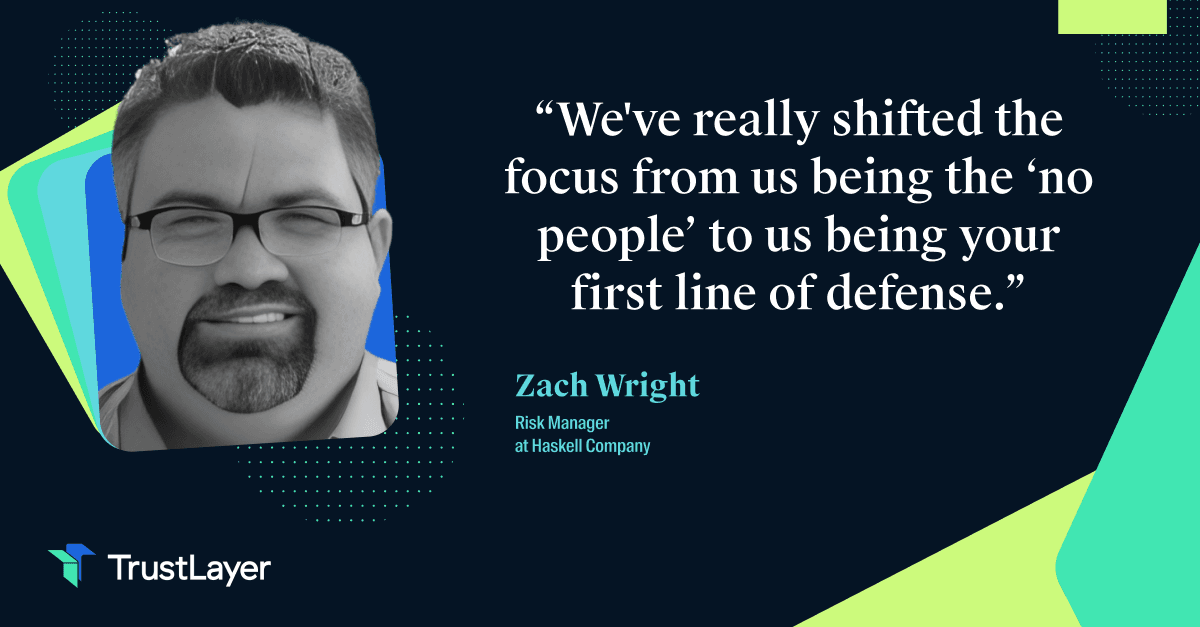In the fast-paced world of insurance, staying compliant is essential for success. Ensuring that all necessary documents are in order and up to date can be a daunting task. Manual tracking of insurance compliance documents is not only time-consuming but also prone to human error. However, the shift towards automation has revolutionized the insurance industry, making compliance management more efficient than ever before. By automating document tracking, insurance companies can streamline their operations, reduce risks, and save valuable time and resources.
Understanding Insurance Compliance Document Tracking
Before delving into the benefits of automated document tracking, it's crucial to understand the importance of compliance in insurance. Compliance ensures that insurance companies adhere to laws and regulations set forth by regulatory bodies. It serves as a safeguard for both the company and its clients, protecting the interests of all stakeholders involved. Insurance companies must comply with a myriad of requirements, including licensing, disclosure, and claims handling procedures, among others.
The Importance of Compliance in Insurance
Compliance is a vital aspect of the insurance industry. It promotes transparency, trust, and accountability, enabling insurers to operate ethically and responsibly. Failing to comply with regulations can result in severe consequences, including financial penalties and reputational damage.
What is Document Tracking and Why is it Necessary?
Document tracking involves monitoring and managing the various insurance compliance documents to ensure they meet the required standards. It includes tracking certificates of insurance, policy endorsements, and other essential documents. Document tracking is crucial because:
- It ensures that all documents are up to date and compliant with applicable regulations.
- It minimizes the risk of non-compliance, protecting the company from legal and financial consequences.
- It allows insurers to easily access and retrieve documents when needed, improving efficiency and saving time.
Furthermore, document tracking plays a significant role in maintaining accurate and organized records for insurance companies. With the ever-increasing volume of documents that insurers handle, it can be challenging to keep track of each document's status and ensure its compliance. Automated document tracking systems offer a solution to this problem by providing a centralized platform for managing and monitoring all insurance compliance documents.
These systems utilize advanced technologies such as optical character recognition (OCR) and machine learning algorithms to streamline the document tracking process. OCR technology enables the system to extract relevant information from documents automatically, eliminating the need for manual data entry and reducing the risk of human error. Machine learning algorithms continuously analyze and categorize documents based on their content, making it easier for insurers to locate specific documents quickly.
Moreover, automated document tracking systems provide real-time notifications and alerts for document expirations or upcoming renewals. This proactive approach ensures that insurance companies stay on top of their compliance obligations, avoiding any lapses that could lead to non-compliance issues.
In conclusion, document tracking is an essential component of insurance compliance. By implementing automated document tracking systems, insurance companies can enhance their compliance efforts, improve operational efficiency, and mitigate the risks associated with non-compliance. These systems not only save time and resources but also contribute to maintaining a high level of transparency and accountability within the insurance industry.
The Challenges of Manual Document Tracking
While manual document tracking has been the traditional approach, it comes with several challenges that can hinder efficiency and increase the risk of errors.
One of the key challenges faced in manual document tracking is the lack of scalability. As a company grows and the volume of documents increases, the manual process becomes increasingly cumbersome. This can result in a backlog of untracked documents, making it difficult to stay organized and up to date.
Time-Consumption in Manual Tracking
Manually tracking insurance compliance documents is a time-consuming process. From organizing paper files to searching for specific documents, the manual approach eats up valuable time that could be better spent on other important tasks. This inefficiency can also lead to delays in responding to client inquiries or regulatory requests.
Moreover, the manual handling of documents makes it challenging to track the history of changes and updates. Without a clear audit trail, it becomes harder to ensure the accuracy and integrity of the documents, leaving room for discrepancies and confusion.
Risks of Human Error in Compliance
Manual tracking increases the risk of human error. With numerous documents to manage and update regularly, it's easy for human oversight to result in non-compliance. Even small mistakes, such as an outdated certificate of insurance, can have significant consequences and expose the company to unnecessary risks.
Additionally, manual document tracking lacks the robust security measures that automated systems offer. Storing sensitive compliance documents in physical files leaves them vulnerable to loss, theft, or damage. This not only jeopardizes the confidentiality of the information but also raises concerns about data protection and regulatory compliance.
The Shift Towards Automation in Insurance Compliance
To overcome the challenges of manual document tracking, insurance companies are embracing automation. Thanks to advancements in technology, automated compliance management systems have become a game-changer for the industry.
The Role of Technology in Compliance Management
Technology plays a pivotal role in enabling efficient compliance management. Automated systems utilize artificial intelligence and machine learning algorithms to track, analyze, and manage insurance compliance documents. These systems automate manual tasks, allowing insurers to focus on more value-added activities.
Benefits of Automating Document Tracking
Automating document tracking comes with several benefits for insurance companies:
- Improved Accuracy: Automated systems eliminate the risk of human error, ensuring that all compliance documents are accurate and up to date.
- Time and Cost Savings: By automating manual tasks, insurers can save time and resources, resulting in increased operational efficiency and cost savings.
- Real-Time Insights: Automated systems provide real-time visibility into compliance status, allowing insurers to proactively address any non-compliance issues.
- Streamlined Audits: Automated document tracking simplifies the audit process by providing organized and easily accessible information, reducing the time and effort required for audits.
Furthermore, automation in insurance compliance goes beyond document tracking. It extends to other areas such as risk assessment and policy management. With automated systems, insurers can assess risks more accurately by leveraging data analytics and predictive modeling. This enables them to identify potential compliance issues and take proactive measures to mitigate them.
In addition, automated compliance management systems offer enhanced policy management capabilities. Insurers can easily track policy changes, update documentation, and ensure compliance with regulatory requirements. This not only improves operational efficiency but also helps insurers stay ahead of changing regulations and maintain a competitive edge in the market.
Key Features of Automated Compliance Document Tracking Systems
Automated compliance document tracking systems offer a range of features designed to streamline the process and enhance efficiency:
Real-Time Document Tracking
With real-time document tracking, insurers can monitor the status of compliance documents instantly. Any updates or changes are reflected immediately, ensuring that insurers always have access to the most up-to-date information.
Automated Alerts and Notifications
Automated systems can send alerts and notifications to insurers when compliance documents are due for renewal or when there are any changes or issues detected. These proactive reminders help ensure timely action and prevent lapses in compliance.
Moreover, automated compliance document tracking systems often come equipped with advanced reporting capabilities. These systems can generate detailed reports on compliance document status, trends, and potential areas of improvement. Insurers can leverage these insights to make informed decisions and enhance their overall compliance processes.
Integration with Other Systems
Another key feature of automated compliance document tracking systems is their ability to seamlessly integrate with other existing systems within an organization. This integration allows for the automatic transfer of data between systems, reducing manual data entry errors and saving time for insurers.
Implementing Automated Document Tracking in Your Organization
Transitioning from manual to automated document tracking may seem overwhelming, but with the right approach, it can be a seamless and efficient process.
Automated document tracking systems offer numerous benefits, such as improved accuracy, increased productivity, and enhanced compliance. By eliminating manual data entry and streamlining document management, organizations can save time and resources, allowing employees to focus on more strategic tasks.
Steps to Transition from Manual to Automated Systems
When implementing automated document tracking, insurers should follow these steps:
- Evaluate Your Needs: Assess your organization's specific requirements and identify areas where automation can bring the most significant benefits.
- Choose a Reliable Solution: Research and choose an automated compliance document tracking system that aligns with your needs and offers the necessary features.
- Train Your Team: Provide comprehensive training to your team members to ensure they understand how to navigate and utilize the new system effectively.
- Integrate with Existing Systems: Integrate the new automated system with your existing technology infrastructure to ensure a seamless workflow.
- Monitor and Refine: Continuously monitor the performance of the automated system and make refinements as needed to optimize its effectiveness.
By following these steps, organizations can successfully transition from manual to automated document tracking, reaping the benefits of improved efficiency and compliance.
Choosing the Right Automated Compliance Document Tracking System
When selecting an automated compliance document tracking system, it's crucial to choose a reliable and trusted solution that offers the necessary features for your organization. TrustLayer is one such solution that has gained recognition in the industry for its comprehensive compliance management capabilities.
TrustLayer's automated compliance document tracking system offers advanced features such as real-time document tracking, automated notifications, and customizable reporting. With its intuitive interface and robust security measures, TrustLayer ensures that your organization's sensitive information is protected while streamlining compliance processes.
Automating insurance compliance document tracking is key to achieving operational efficiency, reducing risks, and ensuring regulatory compliance. By leveraging technology and adopting automated systems, insurance companies can focus on delivering exceptional service while staying compliant in a fast-paced industry.
Ready to elevate your insurance compliance management to the next level? TrustLayer is here to transform your certificate of insurance tracking with our industry-leading solution. Embrace the future of risk management and join the hundreds of thousands of companies who have already streamlined their vendor document management with our innovative technology. Say goodbye to the administrative burden of manual processes and hello to efficiency. Don't let compliance tracking slow you down. Set up a time to talk with our team and discover how TrustLayer can automate and simplify your compliance document verification, saving you time and money. It's time to work smarter, not harder.








